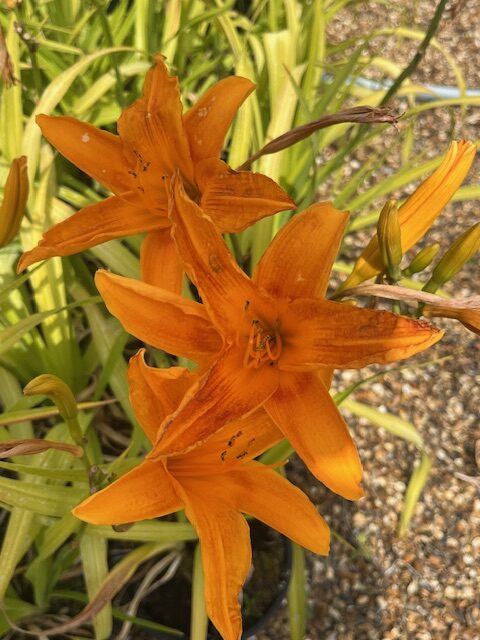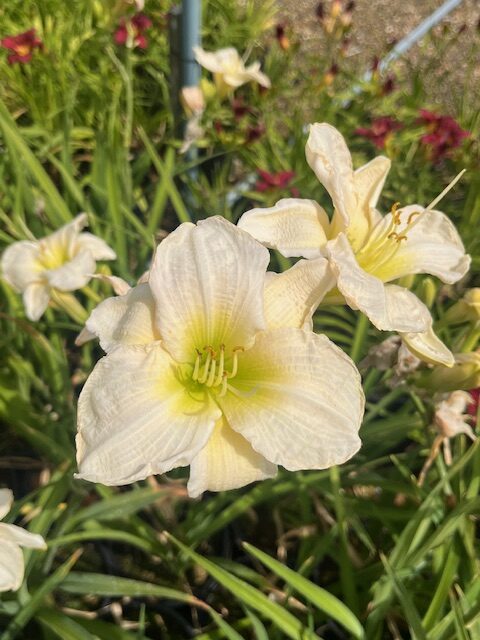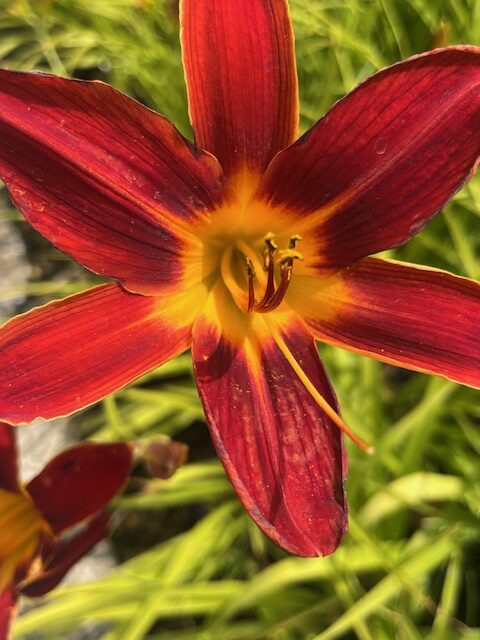The Changing UK Climate And Your Garden Plants



Daylilies (Hemerocallis) responding well to Uk climate change
How the Changing UK Climate is Benefiting (and Challenging) Garden Plants
Over the past few years, the UK’s shifting climate patterns—characterised by warmer summers, milder winters, and more erratic rainfall—have had a significant impact on garden plants. While some traditional favourites are starting to struggle, other, often more exotic species are thriving in ways previously unseen in British gardens. Here’s a look at some of the winners and losers.
🌿 Plants Thriving in the New UK Climate
- Daylilies (Hemerocallis)
These hardy, low-maintenance perennials have become a standout success story. With longer growing seasons and warmer temperatures, daylilies are flowering more prolifically and for longer periods, making them a perfect fit for modern borders and wildlife-friendly gardens. - Passion Flowers and Passion Fruit
Once considered marginal in the UK, passion flowers (Passiflora caerulea) are not only thriving but also producing fruit that’s now ripening and becoming almost fully edible in some regions. South-facing walls and warm microclimates are helping push this once exotic plant into the mainstream. - Grapes – Mediterranean Varieties
The warmer conditions have also made it possible to grow more unusual Mediterranean grape varieties outdoors in the UK. Cultivars such as ‘Muscat of Alexandria’ and ‘Chasselas’ are producing edible, flavourful grapes—something that was difficult to achieve reliably even a decade ago. - Nectarines
Traditionally greenhouse or conservatory crops in the UK, nectarines are now being successfully grown outside when trained against warm, south- or west-facing walls or fences. Improved sun exposure and longer warm spells allow the fruit to ripen properly without as much risk of disease.
Other Plants on the Rise:
Figs, especially in sheltered spots, are cropping more heavily.
Agapanthus, particularly evergreen varieties, are showing stronger performance with milder winters.
Olives are becoming increasingly viable in the southeast and coastal regions.
Plants Struggling with the Extremes
While many Mediterranean-style plants are flourishing, not all species are enjoying the changes.
Hydrangeas
These traditionally hardy garden shrubs are now facing greater challenges. Prolonged dry spells followed by heavy downpours are placing stress on hydrangeas, especially big-leaved varieties like Hydrangea macrophylla. They’re more prone to wilting and leaf scorch in full sun, particularly when roots struggle to access consistent moisture.
New Best Practice for Hydrangeas:
Grow in semi-shade, ideally under light tree canopy cover.
Choose sheltered positions that receive late afternoon sun.
Use mulch to retain soil moisture during dry spells.
The exception: Hydrangea petiolaris, the climbing hydrangea, continues to thrive when trained up brick or stone walls, where the substrate keeps roots cool and damp, and growth is often more vigorous.
Looking Ahead
As the UK climate continues to evolve, gardeners will need to adapt by experimenting with new varieties and reconsidering the placement of more traditional plants. Microclimates within gardens—like sun traps, sheltered corners, and thermal mass walls—are increasingly important when planning plant positions.
Now is a great time to trial new plants and observe how they respond to your local conditions. With careful selection and placement, your garden can continue to thrive—even in the face of climate uncertainty.





















